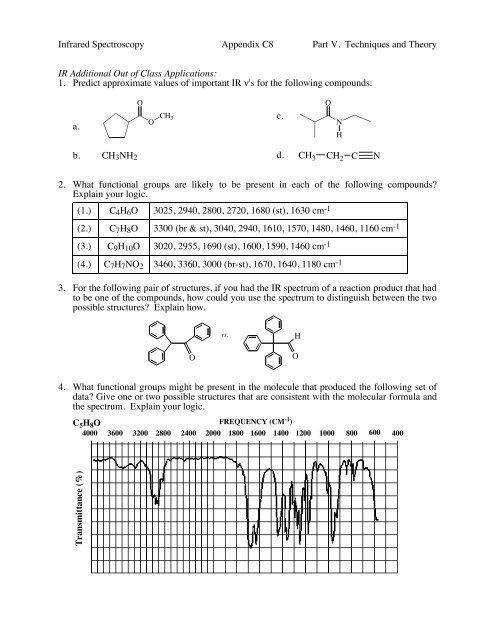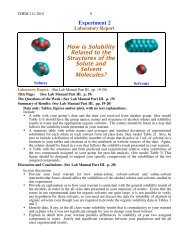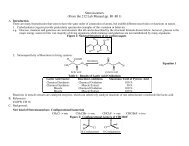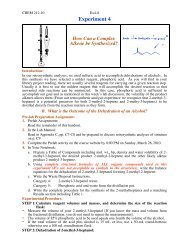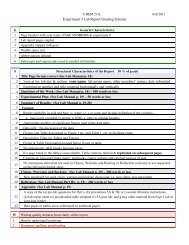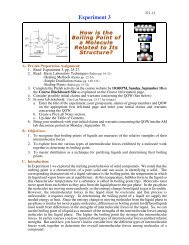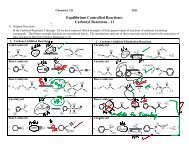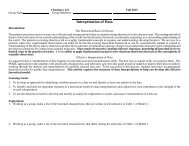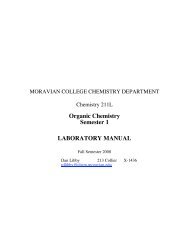Organic Chemistry Semester 1 LABORATORY MANUAL - Moravian ...
Organic Chemistry Semester 1 LABORATORY MANUAL - Moravian ...
Organic Chemistry Semester 1 LABORATORY MANUAL - Moravian ...
Create successful ePaper yourself
Turn your PDF publications into a flip-book with our unique Google optimized e-Paper software.
Infrared Spectroscopy Appendix C8 Part V. Techniques and Theory<br />
IR Additional Out of Class Applications:<br />
1. Predict approximate values of important IR ν's for the following compounds:<br />
O<br />
O CH 3<br />
c.<br />
a.<br />
b. CH 3 NH 2<br />
O<br />
N<br />
H<br />
d. CH 3 CH 2 C N<br />
2. What functional groups are likely to be present in each of the following compounds<br />
Explain your logic.<br />
(1.) C 4 H 6 O 3025, 2940, 2800, 2720, 1680 (st), 1630 cm -1<br />
(2.) C 7 H 8 O 3300 (br & st), 3040, 2940, 1610, 1570, 1480, 1460, 1160 cm -1<br />
(3.) C 9 H 10 O 3020, 2955, 1690 (st), 1600, 1590, 1460 cm -1<br />
(4.) C 7 H 7 NO 2 3460, 3360, 3000 (br-st), 1670, 1640, 1180 cm -1<br />
3. For the following pair of structures, if you had the IR spectrum of a reaction product that had<br />
to be one of the compounds, how could you use the spectrum to distinguish between the two<br />
possible structures Explain how.<br />
vs.<br />
H<br />
O<br />
O<br />
4. What functional groups might be present in the molecule that produced the following set of<br />
data Give one or two possible structures that are consistent with the molecular formula and<br />
the spectrum. Explain your logic.<br />
C 5 H 8 O<br />
4000<br />
3600<br />
3200<br />
2800<br />
2400<br />
FREQUENCY (CM -1 )<br />
2000 1800 1600 1400<br />
1200<br />
1000<br />
800<br />
600<br />
400<br />
80<br />
Transmittance (%)<br />
60<br />
40<br />
20<br />
0


